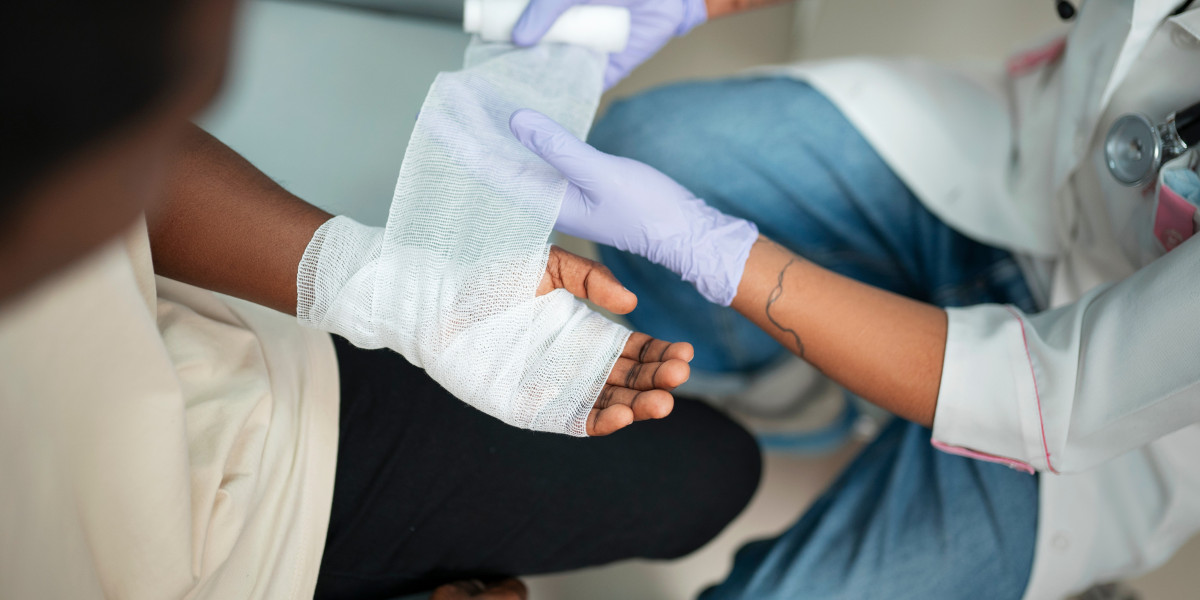Healing from wounds, whether due to injury, surgery, or chronic conditions, often requires meticulous care. A vital aspect of wound management is wound debridement a process that removes dead or infected tissue to promote faster recovery and prevent complications. Understanding the importance of wound debridement, its benefits, and available services is essential for achieving optimal healing.
In this article, we’ll dive into what wound debridement entails, the different methods available, and how expert wound debridement services can support recovery.
What is Wound Debridement?
Wound debridement refers to the removal of dead, damaged, or infected tissue from a wound to promote healing. This process is crucial for preventing infection, reducing inflammation, and encouraging the growth of healthy tissue.
When a wound contains necrotic (dead) tissue or debris, it creates an environment where bacteria can thrive, delaying healing and increasing the risk of complications. By carefully removing these obstacles, wound debridement improves circulation to the affected area and sets the stage for faster recovery.
Why is Wound Debridement Important?
Prevents Infection
Necrotic tissue and debris in a wound can harbor bacteria, increasing the risk of serious infections. Debridement clears the wound of harmful materials, creating a cleaner environment for healing.Promotes Healing
Removing dead tissue helps to restore proper blood flow to the wound, encouraging the growth of new, healthy tissue. This accelerates the healing process and reduces the chances of complications.Reduces Pain and Inflammation
By eliminating irritants from the wound, debridement can decrease pain, swelling, and redness.Improves Aesthetic Outcomes
Timely and effective wound care, including debridement, can result in less scarring and better overall wound appearance after healing.
Types of Wound Debridement
Several methods are used for wound debridement, depending on the wound’s severity, location, and type. Each method has its own advantages and is selected based on individual patient needs.
1. Surgical Debridement
This involves using surgical tools like scalpels and scissors to remove dead tissue. It is typically performed by a healthcare professional in cases of severe wounds or extensive tissue damage.
When it’s used:
For large or deep wounds, infected wounds, or when other methods are insufficient.Advantages:
Immediate removal of necrotic tissue and quick preparation of the wound for healing.
2. Autolytic Debridement
This method allows the body’s natural enzymes and moisture to break down dead tissue. Special dressings, such as hydrogels or hydrocolloids, are applied to the wound to create an ideal healing environment.
When it’s used:
For minor wounds, pressure ulcers, or wounds with minimal necrotic tissue.Advantages:
Non-invasive and painless.
3. Mechanical Debridement
In this approach, external forces like irrigation, wet-to-dry dressings, or wound scrubbing are used to remove debris and dead tissue.
When it’s used:
For wounds with significant debris or slough.Advantages:
Cost-effective and straightforward, though it can be uncomfortable for patients.
4. Enzymatic Debridement
In this method, topical enzymes are applied to the wound to break down necrotic tissue.
When it’s used:
For wounds that cannot be treated surgically or for patients who prefer non-invasive options.Advantages:
Targets necrotic tissue without harming healthy tissue.
5. Biological Debridement
Also known as maggot therapy, this involves the use of sterilized maggots that consume dead tissue while leaving healthy tissue intact.
When it’s used:
For chronic wounds, diabetic ulcers, or wounds resistant to other treatments.Advantages:
Highly effective in removing necrotic tissue and reducing infection.
Who Needs Wound Debridement?
Wound debridement is essential for various types of wounds, including:
Chronic wounds (e.g., diabetic ulcers, pressure ulcers).
Surgical wounds with delayed healing.
Traumatic injuries with foreign debris or necrotic tissue.
Infected wounds.
Patients with underlying health conditions like diabetes, vascular disease, or compromised immune systems often require specialized wound debridement services to promote proper healing.
What to Expect During Wound Debridement
Initial Assessment
A healthcare provider will examine the wound to determine the best method of debridement based on its size, depth, and severity.Preparation
Depending on the type of debridement, the area may be numbed with local anesthesia to minimize discomfort.The Procedure
The chosen method is applied to remove necrotic tissue. For surgical debridement, sterile instruments are used, while autolytic and enzymatic debridement rely on topical applications.Aftercare
The wound is cleaned, dressed, and monitored to ensure healing. Follow-up visits may be necessary to track progress and address any issues.
Benefits of Expert Wound Debridement Services
Seeking professional wound debridement ensures safe and effective care tailored to your specific needs. Here’s why expert services are crucial:
Proper Diagnosis: Experts can accurately assess the wound’s condition and recommend the most suitable debridement method.
Infection Control: Professional care minimizes the risk of infection, ensuring a sterile environment during treatment.
Pain Management: Skilled practitioners provide pain relief and emotional support throughout the process.
Faster Recovery: Advanced techniques and experienced care promote quicker healing and reduce complications.
Customized Care Plans: Each patient receives personalized treatment based on their medical history and wound type.
Preventing Wounds and Promoting Healing
While wound debridement is a critical part of wound care, preventing wounds and supporting healing are equally important.
Tips for Wound Prevention
Maintain proper hygiene and moisturize your skin.
Use protective equipment during activities that may cause injuries.
Manage chronic conditions like diabetes to prevent ulcers or slow-healing wounds.
Supporting Wound Healing
Eat a balanced diet rich in vitamins and minerals to support tissue repair.
Keep the wound clean and follow aftercare instructions diligently.
Avoid smoking, as it reduces blood flow and delays healing.
Frequently Asked Questions (FAQs)
1. Is wound debridement painful?
The level of discomfort depends on the method used. Surgical debridement may require anesthesia, while autolytic and enzymatic methods are generally painless. Your healthcare provider will ensure your comfort during the procedure.
2. How long does it take for a wound to heal after debridement?
Healing time varies based on the wound’s size, severity, and your overall health. Regular follow-ups and proper care can accelerate recovery.
3. Can wound debridement prevent amputation?
Yes, timely and effective debridement can reduce the risk of severe infection and complications, potentially preventing amputation.
4. Is debridement necessary for all wounds?
No, minor wounds without necrotic tissue may not require debridement. It is typically recommended for chronic or infected wounds.
5. How do I know if I need wound debridement?
Signs such as delayed healing, increased pain, redness, swelling, or foul-smelling discharge may indicate the need for debridement. Consult a healthcare provider for evaluation.
Conclusion
Wound debridement is an essential step in managing wounds and ensuring proper healing. By removing dead or infected tissue, it not only accelerates recovery but also prevents serious complications. Seeking expert wound debridement services provides the care and expertise needed for optimal results.
Whether you’re dealing with a chronic wound, surgical incision, or injury, prioritizing professional care and following a comprehensive aftercare plan can make all the difference. With the right approach, you can promote faster healing and regain your quality of life.









